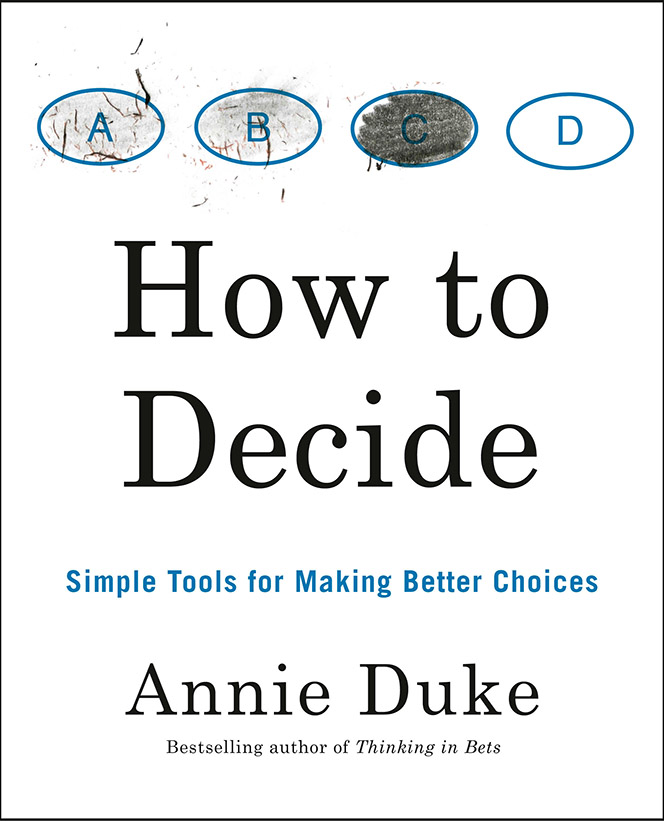How to Decide 📚

How to Decide digs into the characteristics of decision making and provides tools for making better decisions.
I took away loads of things to try and recommend the book.
Below are some of the salient points that stood out to me.
Traits of good decision making
Two things determine how your life turns out: luck and the quality of your decisions. You can only control the second.
Any decision is essentially a prediction about the future.
When making a decision your objective is to choose the option that gains you the most ground in achieving your goals, taking into account how much you’re willing to risk.
You need to develop a decision process that improves your decision quality and helps you sort your decisions to identify which are larger and which are smaller.
A good decision tool seeks to reduce the impact of cognitive biases.
Determining whether a decision is good or bad means examining the quality of the beliefs informing the decision, the available options, and how the future might turn out given any choice you make.
Using the quality of the outcome to judge the quality of the decision causes you to learn the wrong lessons and is called resulting.
Uncertainty and decision making
Imperfect information is a kind of uncertainty that interferes before a decision.
Luck is a kind of uncertainty that can interfere after the decision is made but before the outcome.
Chasing certainty causes analysis paralysis.
Biases
Hindsight bias is the tendency to believe an event, after it occurs, was predictable or inevitable.
Memory creep is when what you know after the fact creeps into your memory of what you knew before the fact.
Tilt is when a bad outcome causes you to be in an emotionally hot state that compromises the quality of your decision making.
Quitting
Quitting is a powerful tool for defraying opportunity cost and gathering intel, intel that will allow you to make higher-quality decisions about the things you decide to stick to.
Tools and Techniques
There are quite a few in the book. Here are some that resonated with me.
Use a Knowledge tracker to avoid hindsight bias.
Use Decision trees for evaluating past decisions and improving the quality of new ones.
Repeating options are when the same type of decision comes up over and over again you get repeated chances to choose options, including options you may have rejected in the past.
When a decision is hard, that means it’s easy. When you’re weighing two options that are close it can feel like the decision is difficult. The decision is actually easy, because whichever one you choose you can’t be that wrong since the difference between the two is so small.
The lower the cost to quit, the faster you can go, because it’s easier to unwind the decision and choose a different option, including options you may have rejected in the past.